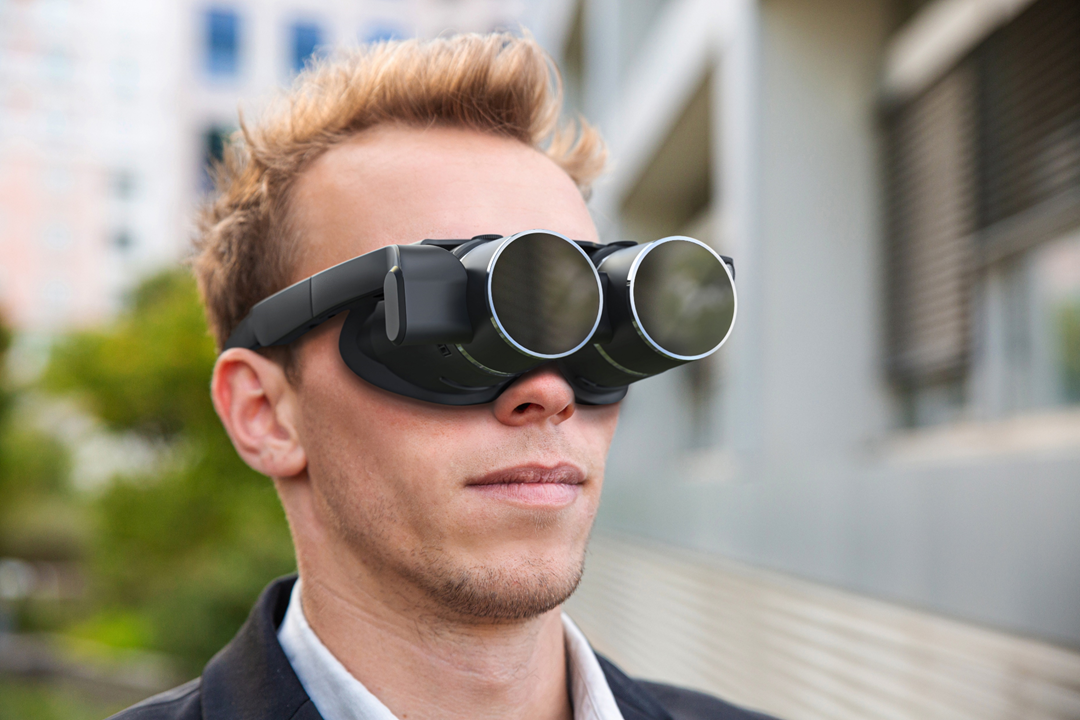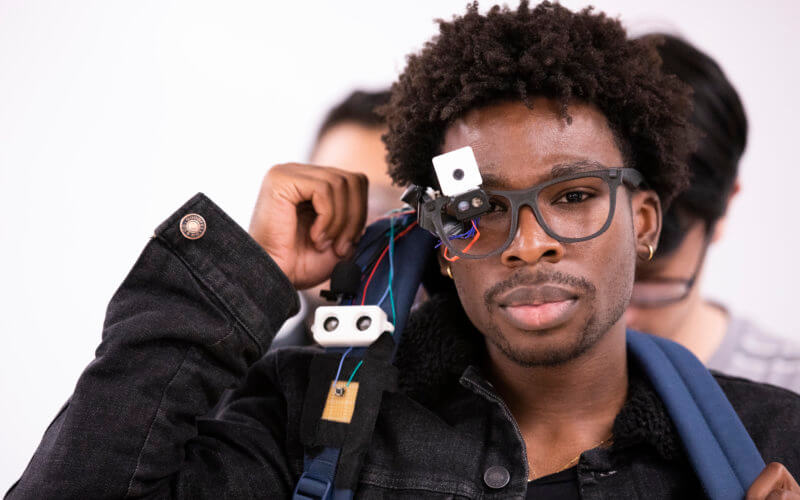Maximizing Efficiency with Screen Readers for the Blind: A Comprehensive Guide
Maximizing Efficiency with Screen Readers for the Blind: A Comprehensive Guide
Blog Article
Empowering Independence With Assistive Technology for the Blind
The assimilation of assistive modern technology for people who are aesthetically damaged or blind stands for a considerable innovation in cultivating self-reliance and enhancing lifestyle. With a variety of devices-- from screen readers to innovative responsive tools-- these innovations not only help with navigating and communication but additionally promote social addition and involvement in different aspects of life. As we discover the varied types of assistive gadgets and their real-world applications, it becomes clear that the effect is profound. Yet, the evolution of this innovation raises important inquiries concerning ease of access and future growths that call for additional exam. Assistive technology for the blind.
Comprehending Assistive Technology
Although assistive modern technology has advanced dramatically for many years, its basic purpose remains the same: to boost the lifestyle for individuals with disabilities, especially those who are blind or aesthetically impaired. This technology includes a wide series of tools and gadgets that assist in freedom and functionality in daily activities.
Assistive innovation can be categorized into state-of-the-art and low-tech solutions, each created to fulfill specific demands. Sophisticated devices typically include software application applications, specialized equipment, and adaptive devices that make use of innovative technology to supply support in different contexts. Alternatively, low-tech options may involve everyday items that are modified to boost ease of access, such as magnifiers or tactile markers.
The combination of assistive innovation into the lives of people who are blind or visually impaired not just promotes autonomy however also fosters social addition and engagement in instructional and specialist environments. By leveraging these innovations, users can navigate their surroundings, access info, and interact successfully, thus boosting their total lifestyle. Understanding assistive modern technology is crucial for caretakers, specialists, and supporters that aim to sustain individuals in maximizing their prospective and achieving better freedom.
Sorts Of Assistive Devices
Assistive tools for the aesthetically damaged and blind are essential devices that boost daily obeying resolving details difficulties run into by users. These devices can be generally categorized into three primary kinds: optical devices, digital tools, and sensory devices.

Sensory gadgets, such as Braille screens and tactile maps, supply alternate means to receive info. Braille presents transform electronic text right into Braille, allowing customers to review via touch. Responsive maps provide spatial understanding through increased structures and lines, permitting much better ecological understanding.
Together, these assistive gadgets empower people with aesthetic disabilities to involve more completely with their surroundings, promoting better freedom and self-confidence in daily tasks.

Impact on Every Day Life
The integration of assistive innovation into the day-to-days live of individuals that are blind or aesthetically damaged significantly enhances their capability to navigate and communicate with the world around them. Tools such as screen viewers, Braille shows, and mobile applications promote access to details, permitting users to engage with electronic web content, connect successfully, and manage day-to-day tasks separately.
Additionally, technologies like smart glasses and navigating applications provide real-time help in strange atmospheres, boosting mobility and self-confidence. These devices allow individuals to recognize challenges, checked out optometrist definition signs, and also recognize faces, thus promoting a sense of autonomy in public rooms. In addition, home automation systems, which can be regulated with voice commands, enable people to handle their living environments better, enhancing comfort and security.
The effect of assistive technology prolongs past functional tasks; it advertises social addition and psychological well-being. By connecting the void in between people and their surroundings, these technologies equip individuals to participate totally in area activities, pursue academic chances, and participate in meaningful partnerships. Ultimately, the development of assistive modern technology contributes in redefining the opportunities for people who are visually impaired or blind, leading to an extra comprehensive and easily accessible culture.
Success Stories and Testimonials

An additional powerful endorsement comes from Mark, a recent college grad who made use of display reading software throughout his scholastic journey. This innovation enabled him to gain access to program products and take part in discussions, eventually resulting in his effective shift right into the labor force. Mark credit scores assistive technology for encouraging him to achieve his job goals, stressing its role in leveling the playing field for individuals with aesthetic disabilities.
In addition, recreation center have actually reported boosted engagement in their programs thanks to the intro of available digital platforms. These platforms have made it simpler for people to connect, share sources, and assistance each other. These success tales collectively underscore the extensive result of assistive modern technology in cultivating independence, boosting lifestyle, and damaging down obstacles for the visually damaged and blind community.
Future Trends in Assistive Tech
Arising technologies are poised to revolutionize the landscape of assistive technology for people that are blind or aesthetically impaired. Advancements in synthetic intelligence (AI) and maker discovering are improving the capacities of gadgets, allowing even more user-friendly customer experiences. AI-driven applications are progressively able to read and recognize items text aloud in real-time, offering customers with useful information about their environments.
Furthermore, developments in wearable modern technology are creating new possibilities for independence. Smart glasses outfitted with enhanced reality attributes can overlay vital information onto the individual's area of vision, assisting in navigating and interaction with the setting. Additionally, the combination of Web of Points (IoT) devices is streamlining accessibility in smart homes, enabling users to regulate appliances and obtain alerts with voice commands or responsive user interfaces.
The development of braille screens and tactile comments systems is likewise increasing, promoting access to a knockout post electronic web content and improving communication. As these technologies remain to progress, they assure to boost daily living, instructional possibilities, and employment leads for people with aesthetic impairments. Continuous collaboration between technologists, customers, and advocacy teams will be necessary in making certain these innovations satisfy the requirements of the neighborhood effectively.
Final Thought
To conclude, assistive modern technology plays an essential role in enhancing the independence of people that are visually impaired or blind. By giving vital devices and resources, these innovations promote improved interaction, access, and navigating to info, thereby cultivating autonomy and confidence. The transformative effect of assistive tools not only promotes efficient interaction with the environment yet additionally motivates social inclusion and participation in various facets of life, ultimately empowering users to flourish within their areas.
The assimilation of assistive innovation for individuals who are visually damaged or blind stands for a significant advancement in cultivating freedom and enhancing top quality of life.The combination of assistive modern technology right into the lives of people who are blind or visually impaired not only advertises freedom however also fosters social inclusion and engagement in expert and instructional settings. Ultimately, the advancement of assistive technology is crucial in redefining the possibilities for individuals who are blind or aesthetically damaged, leading to an extra accessible and inclusive culture.
Several people who are blind or visually damaged have shared motivating success stories that eye doctor is called highlight the transformative influence of assistive innovation on their lives.In final thought, assistive technology plays an essential role in boosting the self-reliance of people who are blind or visually impaired.
Report this page